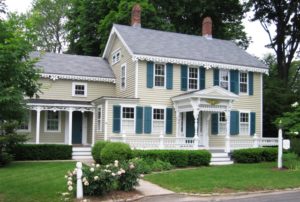 Most clients like to describe their construction project wish list as containing these priorities: the project is cheap, well done, and on time. On our end, we’d like to add another criteria to this typical list: long lasting. Why invest time, money, and so many people’s efforts into a building that doesn’t have the longest life span possible? In this era of disposable everything, we’d like to think that a building can be crafted to stand the test of time, foot traffic, and growth of its inhabitants.
Most clients like to describe their construction project wish list as containing these priorities: the project is cheap, well done, and on time. On our end, we’d like to add another criteria to this typical list: long lasting. Why invest time, money, and so many people’s efforts into a building that doesn’t have the longest life span possible? In this era of disposable everything, we’d like to think that a building can be crafted to stand the test of time, foot traffic, and growth of its inhabitants.
Let’s be clear: we’re talking about the original meaning of the word sustainability – in the construction industry, sustainability is something that is built to last – although the term’s connection with green building practices is not to be overlooked. Green building practices also often incorporate materials that are reused or recycled or environmentally sustainably source, all with the aim of above average life spans.
Sustainable construction aims to create buildings that outdo planned obsolescence by utilizing durable, reliable materials.
-Maple wood – Maple floors in the interior of a house are strong enough to far outlast a few generations of a family in one house.
-Brick – It’s made of clay – it’s the infrastructure used in the Great Wall of China – and even modern bricks are durable, sturdy material for sustainable building.
-Concrete – Using reinforced concrete, one of the most economical building options, can also give your structure extra life.
-Black locust and teak – These woods have natural rot resistance qualities, ensuring that a fence or an outdoor space such as a deck will be around for long time.
Re processed Manufactured products such as glass tile, stone, quartz, engineered wood etc.. These products are also known to last long.
Sustainable building can also mean embracing older construction practices that have been shown to be resilient over time. For example, houses built in the 1950’s have thick concrete foundations that generally have a good amount of steel reinforcements. These foundations are considered viable for at least 100 years!
Consider choosing one of these sensible and practical building options – and don’t forget to make sure it’s environmentally friendly – for your next project, and stretch out the lifespan of your building from the inside out.
- test :


